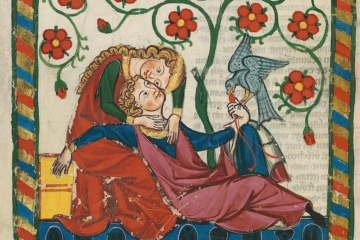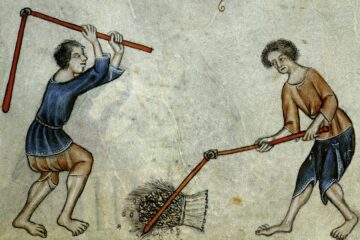by Harry Gulcher, Master of History in Rosewood
His Holiness Pope Alexander I “the Blessed” was known as a benevolent and fair ruler. A man of God, devoted and ever-striving to help those in need. Under his rule, the Papal State knew only peace, a few decades at that. After his passing on the 2nd March 1092, Pope Clement II was named his successor. From the very start it was obvious that he did not concern himself much with peace, but with the waging of war, although just and reasonable, still war.
Pope Clement II was the first Pope to be elected who hailed from the Germanic lands. His close relations to that warring mess made many uneasy, but they would soon find that having a strong proponent of Christian virtues and tradition is better than having a Pope that sits on the fence and waits to see where the wind blows. Alexander was patient, while Pope Clement II takes initiative.
Within the first five years of his election, Pope Clement II would expand his demesne significantly. Since the Papal State had good relations with their southern neighbors, the only way to expand would be to the north, where the countries of Tuscany and Pisa were situated.
On the 6th March 1095, Pope Clement II declared war on Tuscany claiming its southernmost duchy as de Jure part of Rome’s claim to all of Italia. Tuscany responded by calling its allies to fight with them. The Queen of Tuscany, Matilda I, was well-regarded by the local trade republics, so they accepted her call to arms. Soon, the Pope faced four enemies. Tuscany, Pisa, Genoa, and Nice. The Pope, in retaliation, called his allies. Naples and Aquileia. Thus began the months-long conflict known as the Papal Conquests of 1095.
The Papal States were notably stronger than their enemies, having more men. It goes without saying that most of the fighting in the Italian region is done by mercenaries, and both sides were able to purchase an almost identical number of sellswords.
Tensions had been growing for the past few years, so the nations involved knew to place their levies on high alert, which significantly shortened the time needed for the armies to meet each other in open battle.
The Battle of Pisa, 12th March 1095
The Papal forces of 3.100 strong, met the Pisan 2.600 strong. The battle was a resounding victory by the Papal forces who lost but 290 men to death and 50 to desertion, while Pisa lost 510 and 200. The battle itself was short and was over by the initial shock phase performed by the Papal cavalry. This battle allowed the Papal knights to ride for the city of Pisa itself and put it to siege.
The Siege of Pisa, 15th March 1095
The Siege was no spectacular feat. The Papal forces lost nearly no men and it only lasted for 52 days before the walls were breached. The Pope decreed that there would be no waiting, it was pivotal that the war end as soon as possible. After the city fell, all its administrators were imprisoned and urged to sign a surrender, but they insisted on waiting, claiming that the tides of war could shift at any moment. And they were right, the scales were about to tip.
The Battle of Florence, 20th May 1095
Florence was in the middle of it all. Whoever controlled the roads leading through it, controlled the supply lines that fed both armies. So they decided to battle over it. If the Tuscans won, it would mean the Papal forces would have to retreat and give them an opening to strike at Pisa and retake the city.
The Papal forces stood at 7.710 strong, while the Tuscans brought their entire army of 4.200. Most would assume that it would be an easy victory for the Papal State, but in reality, the unfamiliar terrain and the military prowess of Tuscany’s commanders almost dealt the Papal States their first major defeat in the war. But it would seem that the Pope truly is infallible, for his men were able to snatch a close victory. In the end, the Pope lost 1.160 and 250, while the Queen’s forces suffered losses of 1.440 and 500. The battle tipped the scales, and from this point on, there was no “maybe”. The Pope’s conquest was marked by victory. After hearing of the defeat, the Pisan council voted on surrender and accepted the Pope’s terms of confiscation and subjugation on the 22nd May 1095.
The Battle of Verona, 6th July 1095
On the 6th July, the armies of the Pope met up with and decided to crush the remaining Tuscan men. The Pope lost 200 and 20, while the Tuscans lost 1.400 and 500. Their army was no more. But they still would not budge, perhaps hoping the winter would deter the Pope. It didn’t.
The Siege of Verona, 17th July 1095
The siege would last some 63 days, before the Pope’s siege engines managed to breach the walls. The attackers needn’t even attack, for as soon as the walls fell, the defenders surrendered their arms. After a few months of waiting and sacking, Tuscany finally agreed to surrender on the 2nd October 1095.
The war saw the Papal state expand significantly and has spread its influence among the neighboring nations. What it best showed was the Pope’s new temperament and his ambitions. Little do they know that this is only the smallest achievement he will make in the coming years. He will be remembered as Leo III was. History will not forget what he has done.


